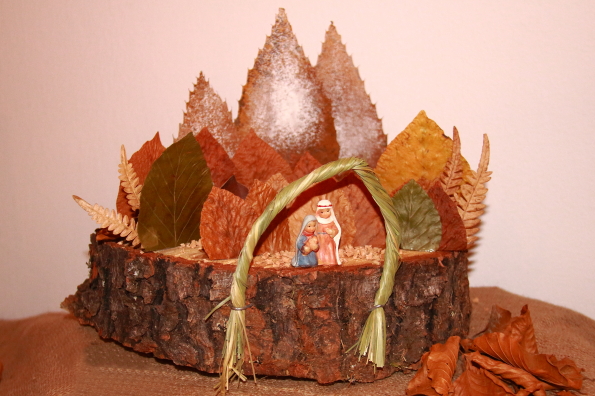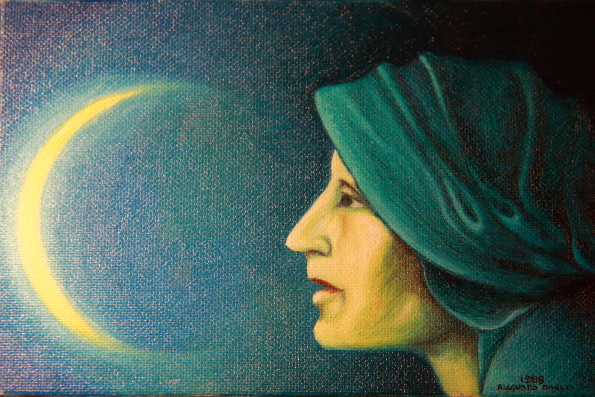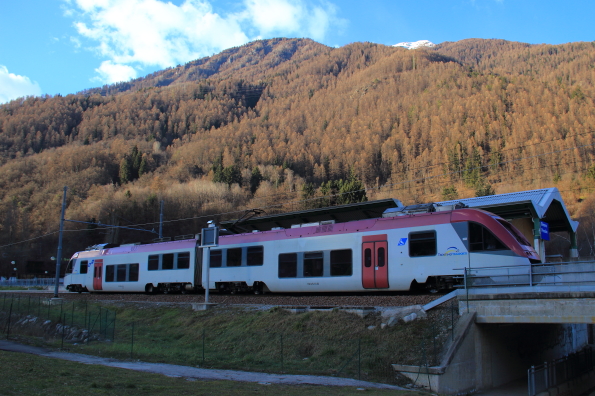
I was on my way to the bus stop in Dimaro to catch the ski bus when I felt someone was watching me. I stopped and turned round to see a life-size Mary with Joseph standing by the village water trough. I noticed the number eight displayed beside them which meant there must be at least seven other nativity scenes in the vicinity. I resolved to find them later but right now it was time to ski and I continued on my way.

We were staying in the village of Dimaro in the Val di Sole which is part of the region of Trentino which is close to the Ski Area, 150 kilometres of connected pistes in the Dolomites. Every morning we got the ski bus from outside our hotel which took us to the slopes of Folgarida or Madonna di Campiglio. Despite a lack of natural snow the snow-making facilities are so good that there were enough runs open to enjoy a full day’s skiing at the end of which we returned to our hotel, Hotel Dolomiti, in Dimaro for some delicious ski snacks. My favourite snack was the freshly made brown bread spread with some ripe gorgonzola cheese. Snacks finished there was just enough light to begin my exploration of Dimaro and I decided to seek out some more nativity scenes. I found several – on the window sills of houses, in the windows of shops, set into log stacks, attached to walls and housed in special huts. As I could not find all of them I went into the tourist information to get a map of their positions. Something got lost in translation and I was pointed to a doorway down the road. It was an entrance to the Municipal building and inside I found an indoor display of nativity scenes. The variety of materials used to construct these small nativities included wood, pencils, leaves and eggshells.


I enjoyed this brief diversion but I still wanted to complete my mission and returned to the tourist information office and this time I emerged triumphant with a map of the village marking the position of all the nativity scenes. They were very spread out and covered some local hamlets as well. I just had time to visit the old saw mill on my way back to the hotel. This building, located on the edge of the town of Dimaro right on the main road to Madonna di Campiglio was my first insight into the history of the town. Documents confirm that its existence can be traced back to the first half of the 19th century and it remained fully functional until 1960. Over time, the saw mill underwent numerous changes, to both the wooden structure and the various mechanisms within the saw mill that were constructed of wood and iron. The community of Dimaro has now completely renovated the saw mill and it is fully functional again. Historically timber was not the only source of income for this area and local communities in Val di Sole developed a flourishing industry in the production of limestone and related products. But this industry declined rapidly during the latter half of the nineteenth century due to the introduction of new industrial ovens and new building materials.

I had to put my exploration on hold for one day as we decided to spend the day skiing in Passo Tonale. We could have made use of the ski bus service between Dimaro and Passo Tonale but we decided to hire our own small bus to get there and back. The ski area is very different due to the altitude and the fact that it incorporates glacier skiing.As my colleagues disentangled their skis from the boot of the bus (it is always my policy to be the last to put mine on board) l noticed a huge war memorial just beyond the parking area which reminded me that this small town was once a war zone during the First World War when it was still part of the Austro-Hapsburg Empire. Now it is a very popular ski resort and we had a lovely day exploring a good variety of runs.

The next afternoon I renewed my search for nativity scenes and set off for the local church, the church of San Lorenzo, as some of them were located nearby. As I had suspected this fifteenth century church had its own, beautiful nativity scene. I also found some lovely frescoes created by the Baschenis, a well-known family of travelling painters during the fifteenth and sixteenth centuries.

As I left the church I noticed a large wooden hut that housed a huge nativity scene people with small dolls. It was in front of the theatre and I could see a life size nativity scene in the foyer. I could also see a poster advertising an exhibition of art there. I was curious to see the paintings of Augusto Daolio that embraced the general title of “Heaven, earth, nature and love”. Daolio was not just an artist but also a musician and an original member of a group called the Nomads. After his death from an aggressive form of cancer his friends established ‘Augustus for Life’ an association that raises funds for cancer research. His art was very unusual and I contributed a few Euros to the funds by purchasing an example on a fridge magnet.

In the small piazza outside the theatre I found some unusual interpretations of a nativity scene –a wooden Christmas tree attached to the wall of a house and a sunny day picture painted on a window. Then I noticed adults coming out of the local school and decided to investigate. There was a large wooden arrow inscribed ‘il presepio’ – another nativity scene to investigate. I followed the path indicated and found a fabulous nativity scene. It was a large model of Dimaro, everything was handmade, and included a procession of local personalities including members of the town band. As I was admiring the detail everything went dark. No, not a power failure, night had fallen and few seconds later a shooting star made its way across the sky. Dawn then broke and a new day started as the church bells began to ring. I stayed there for two ‘days’ before moving on.

I made my way to the town centre passing some more nativity scenes on my way. As I entered the central square I discovered one of the town’s most famous buildings, the casa del Dazio (customs house) and learnt more of its history from the information board displayed outside it. The town of Dimaro once controlled the main road that led to Madonna di Campiglio and into the next valley. The ancient building belonged to the noble de Mazzis family during the 16th century. This town has enjoyed mixed fortunes and until the sixties its poor economy was based on low level agriculture and timber which forced people to emigrate from the area. However, its excellent location in the Dolomite Mountains meant it could take advantage of the growing popularity of winter sports and a ski resort was developed in one of its hamlets, Folgarida. The slopes in Folgarida are now connected to those of Marilleva, Madonna di Campiglio and Pinzolo. In 2007 the Daolasa cabin lift was opened very close to the town centre which offers direct access to this ski area by road and rail as it has a station on the Dolomiti Express line.

My time had run out for exploring but as I walked back through the town I found a wonderful example of a prior existence – an old farmhouse that had been built on three levels. The animals had been kept on the ground floor with the living quarters on the floor above to benefit from the heat rising from the animals and hay was kept in the loft to feed the animals but also acted as insulation to keep the heat in the rooms below.

Night had fallen and it was time to get back to the present and our cosy hotel, a restorative Prosecco and maybe a slice of Italy’s favourite Christmas cake – Panettone.
***************************************************************
Getting there
Several airlines fly to Verona including British Airways and Easyjet. A ski shuttle from the airport offers a very reasonably priced transfer at the weekends. Otherwise there is the frequent shuttle between the airport and Verona station. Regular trains depart from this station for Trento. This website only shows the regional trains (the cheapest trains) 7 days before the departure date. The Dolomiti Express, a small mountain railway runs from Trento. These small trains have comfortable seats for the scenic journey and free WiFi is also available.
